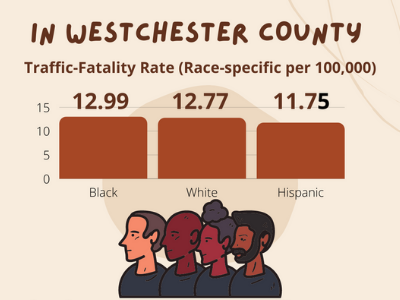
In our daily work to drive traffic-related fatalities to zero, it’s sometimes easy to forget that each of those fatalities represents a mother, father, child, friend, co-worker, a loved one. Although people of all ages, races, ethnicities and income levels suffer the consequences of traffic fatalities, some neighborhoods and groups of people bear a larger share of the burden than others. The National Highway Traffic Safety Administration (NHTSA), State Highway Safety Offices, subgrantees and so many other partners and stakeholders are now beginning to dig deeper into their own data sets and explore new data sources to better identify and understand the disproportionate impact of traffic crashes on these communities. How do we solve this? What is the right thing to do? Important initiatives often have small beginnings, but the most important thing is to take action.
Following a recent jointly conducted grant monitoring, the New York Governor’s Traffic Safety Committee (GTSC) and NHTSA’s Region 2 discovered an unmet need to connect the benefits of GTSC’s highway safety programs with underserved communities within Westchester County. Westchester County has close to one million residents, and 49% are Asian, Black, or Hispanic. Yet, within the county, a Black pedestrian is four times more likely to be killed. There is only one community program serving this area, and it reaches two elementary schools with underserved communities, so the need was evident to expand programmatic efforts. Together, GTSC and Region 2 created a multi-pronged pilot focusing on expanding partnerships and community-driven traffic safety projects through culturally relevant outreach to nonprofits. The pilot targets nonprofits invested in the betterment of communities that have been historically disinvested or disadvantaged but might not have considered transportation or mobility justice to be their core focus. The year-long pilot allows the County-based project manager and Region 2's Regional Program Manager to build trust, engage active participation and provide technical assistance, while simultaneously building the capacity within GTSC to replicate this approach in projects Statewide. For example, the technical assistance consists of sample projects, grant workshops, developing strong problem identification and other pivotal strategies.
The desired outcome is twofold: increasing the quality of FY23 GTSC’s grant applicants and enabling GTSC and Region 2 to listen and learn from underserved communities’ insights, solutions, and perspectives. The hope is through these collective actions, GTSC will both reduce crash-related fatalities and injuries, and reduce disparities within traffic safety, advancing diversity, equity, and inclusion across its highway safety programs.
